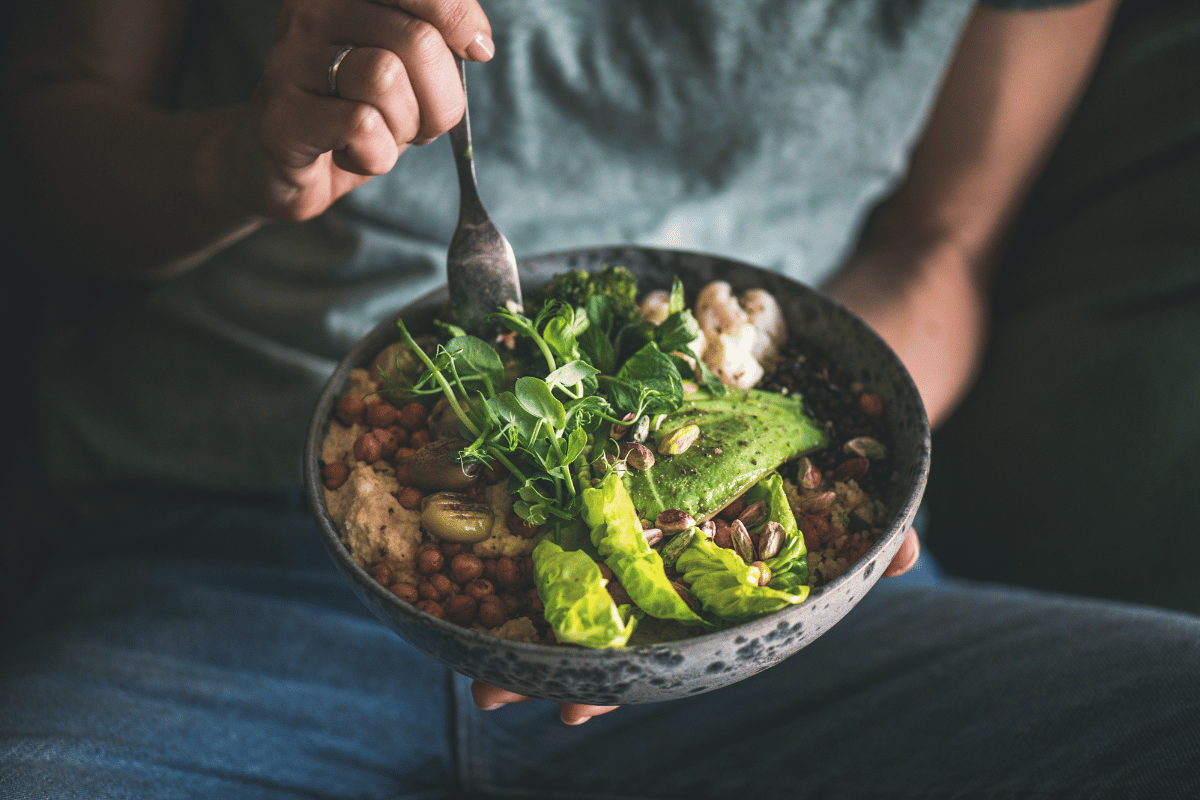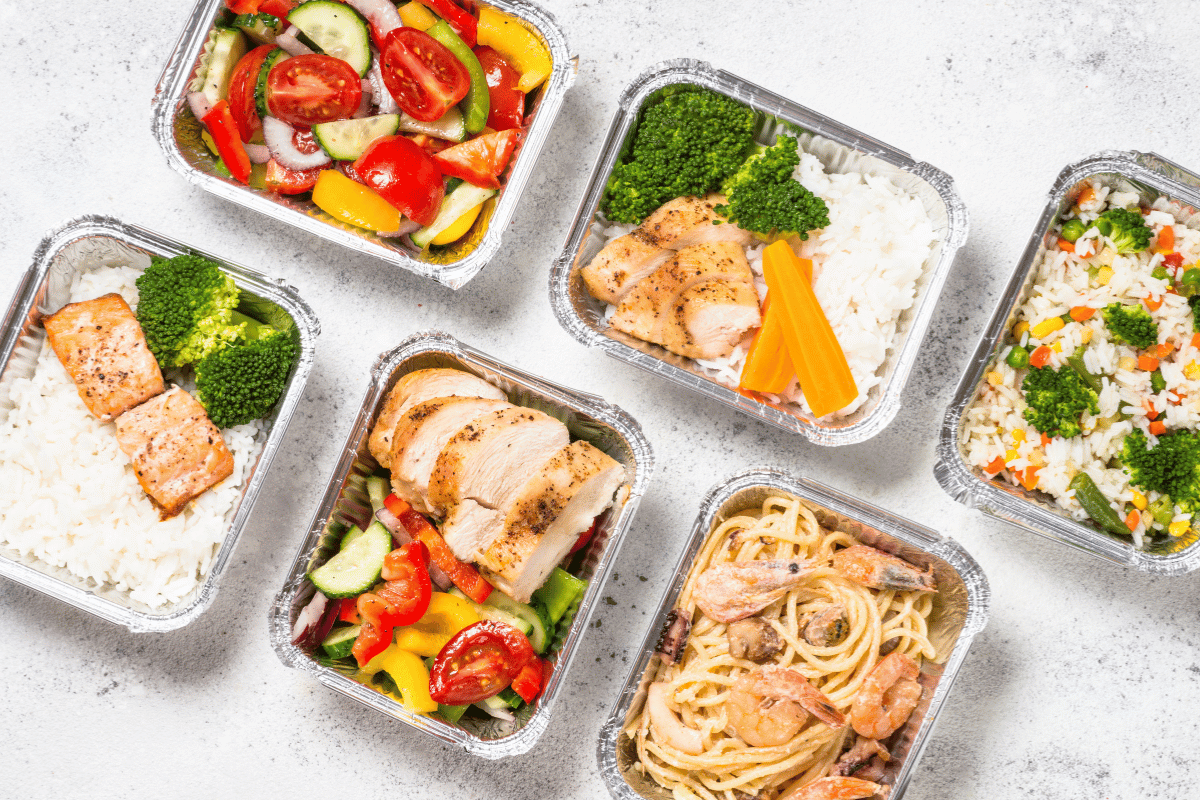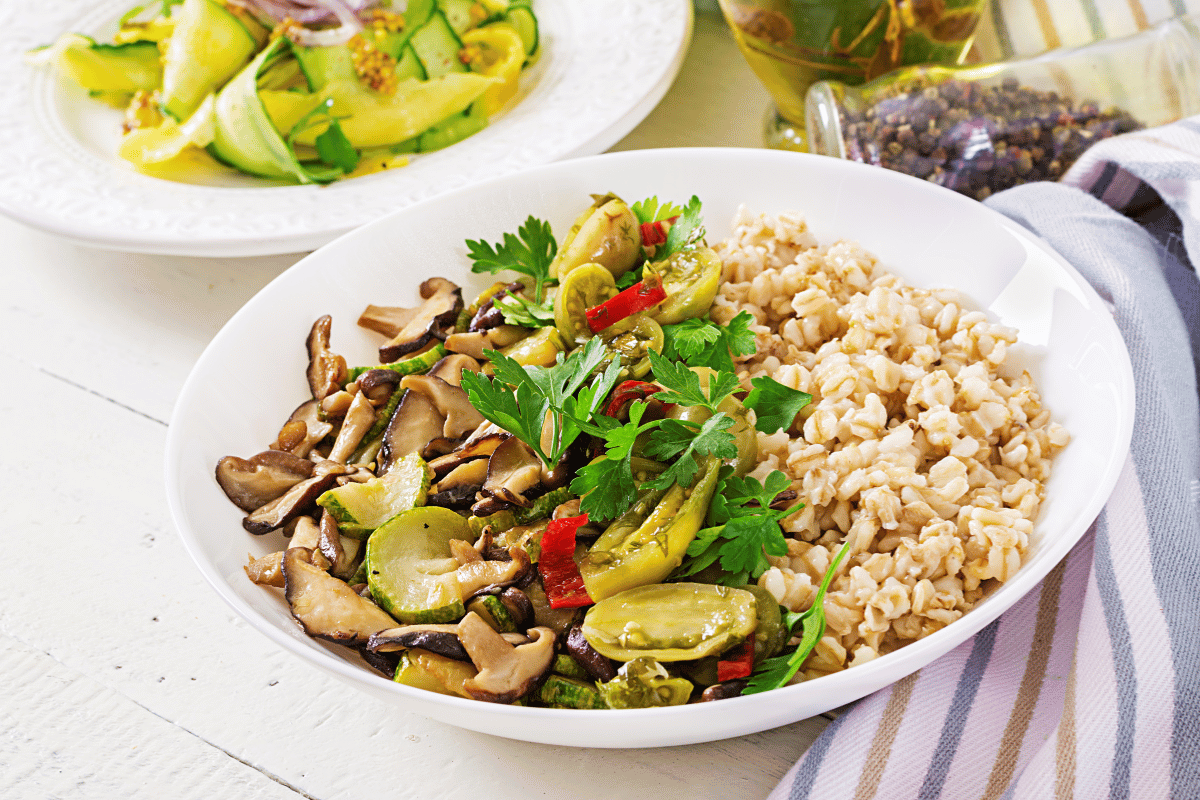Embarking on a weight loss journey can be daunting, but with the right tools and mindset, it’s entirely achievable. The 2024 Weight Loss Recipes: 30-Day Challenge is designed to guide you through a transformative culinary journey, focusing on healthy, delicious, and effective weight loss recipes.
This challenge is not just about shedding pounds; it’s about embracing a healthier lifestyle. Over the next 30 days, you’ll explore a variety of recipes that are not only nutritious but also delectable. Each recipe is crafted to enhance your metabolism, reduce fat, and provide essential nutrients, all while tantalizing your taste buds.
As noted by renowned nutritionist Dr. Angela Martin, “Your diet is the cornerstone of weight loss. Choosing the right foods can make a dramatic difference in your journey.” This challenge emphasizes the importance of a balanced diet, incorporating a mix of proteins, healthy fats, and complex carbohydrates. The recipes are designed to keep you feeling full longer, reduce cravings, and boost your energy levels for an overall improvement in health and wellness.
In this challenge, every meal is an opportunity to nourish your body and support your weight loss goals. Whether you’re a seasoned cook or a beginner in the kitchen, these recipes are straightforward, with a focus on whole, unprocessed ingredients.

The Basics of Weight Loss Through Nutrition
Understanding the science of weight loss is essential for effective and sustainable results. This section breaks down the fundamental principles of nutrition that are key to losing weight, particularly focusing on the role of diet in the process.
Understanding the Science Behind Weight Loss and Nutrition
Weight loss occurs when the body burns more calories than it consumes. This simple principle lies at the heart of every successful weight loss journey. Dr. Brian Foster, a renowned dietitian, explains, “Weight loss is about creating a caloric deficit, but it’s crucial to do so in a healthy, balanced way that nourishes the body.”
Key factors in the science of weight loss include:
- Metabolic Rate: This is the rate at which your body burns calories. It varies from person to person and can be influenced by factors like age, sex, muscle mass, and activity level.
- Caloric Intake and Quality: It’s not just about the quantity of calories but the quality. Nutrient-dense foods provide more energy and satisfaction than empty calories found in processed foods.
Key Components of a Weight Loss-Friendly Diet
A weight loss-friendly diet should have a balance of macronutrients – proteins, fats, and carbohydrates – and be rich in micronutrients (vitamins and minerals). Here are some essentials:
- Proteins: Essential for building and repairing tissues, proteins also help in satiating hunger. Sources include lean meats, fish, eggs, dairy, and plant-based options like beans and lentils.
- Healthy Fats: Contrary to popular belief, not all fats are bad. Healthy fats, found in avocados, nuts, seeds, and olive oil, are vital for overall health and can help keep you full.
- Complex Carbohydrates: Foods high in fiber, such as whole grains, fruits, and vegetables, provide energy and aid in digestion. They also help in maintaining stable blood sugar levels, reducing the urge to snack.
Incorporating these elements into your weight loss recipes can significantly enhance your diet’s effectiveness in shedding pounds. By focusing on nutrient-rich foods, you’ll fuel your body with what it needs to lose weight healthily and sustainably.

Planning Your 30-Day Meal Schedule
A well-planned meal schedule is a cornerstone of successful weight loss. The 2024 Weight Loss Recipes: 30-Day Challenge aims to provide a structured yet flexible plan that keeps your diet varied and enjoyable while focusing on nutritional balance and weight loss effectiveness.
Structuring a Diverse and Balanced 30-Day Meal Plan
Creating a 30-day meal plan doesn’t mean rigid menus or repetitive meals. It’s about finding a balance between structure and flexibility. Nutritionist Susan Miller advises, “A diverse meal plan not only prevents boredom but also ensures a wide range of nutrients, which is essential for a healthy weight loss journey.”
Key considerations for your meal plan include:
- Balanced Macronutrients: Each meal should include a good balance of proteins, fats, and carbohydrates, focusing on whole, unprocessed foods.
- Portion Control: Understanding portion sizes helps in maintaining a calorie deficit while ensuring you get enough nutrients.
- Meal Timing: Regular meal times aid in managing hunger and stabilizing blood sugar levels.
Incorporating Variety to Maintain Motivation and Nutritional Balance
Variety is the spice of life, and it’s equally true for your diet. Experimenting with different weight loss recipes can keep your taste buds excited and your motivation high. Here are some tips to add variety:
- Theme Nights: Allocate different cuisine themes to specific nights — like Mediterranean Mondays or Thai Tuesdays — to explore diverse flavors.
- Seasonal Ingredients: Use seasonal fruits and vegetables. They’re not only fresher and tastier but often more nutrient-rich.
- Creative Leftovers: Transform leftovers into new meals to reduce waste and save time without compromising on taste and nutrition.
A well-planned meal schedule is your roadmap to success in the 30-Day Weight Loss Recipes Challenge. By mixing structured eating with culinary creativity, you’re set to enjoy a month filled with delicious, nutritious, and weight-loss-friendly meals.
Week 1: Kickstarting Your Weight Loss
The first week of the 30-Day Weight Loss Recipes Challenge is crucial for setting the tone for your journey. It’s all about kickstarting your metabolism and beginning the detoxification process, with each day bringing a new, flavorful, and nutritious recipe designed to support weight loss.
Day-by-Day Recipe Guide for the First Week
Day 1: Green Detox Smoothie Kick off your challenge with a refreshing smoothie made from spinach, green apple, cucumber, and a scoop of whey protein. This drink is packed with vitamins and helps in cleansing your system.
Day 2: Quinoa and Black Bean Salad A protein-rich salad that’s both filling and flavorful. Quinoa, black beans, bell peppers, and a hint of lime make this a perfect lunch to boost your metabolism.
Day 3: Grilled Chicken with Steamed Vegetables Simple yet satisfying, this dinner focuses on lean protein and fiber. Season the chicken with herbs for added flavor without extra calories.
Day 4: Oatmeal with Berries and Nuts Start your day with a bowl of whole-grain oatmeal, topped with a mix of berries and a handful of almonds. This meal is high in fiber and good fats, keeping you full for longer.
Day 5: Baked Salmon with Asparagus Salmon, rich in omega-3 fatty acids, paired with asparagus makes for a heart-healthy and weight-loss-friendly dinner.
Day 6: Vegetable Stir-Fry with Tofu A light yet nutrient-dense meal that’s high in protein and loaded with vegetables. Use a variety of colorful veggies for a range of nutrients.
Day 7: Lentil Soup End the week with a comforting bowl of lentil soup. Lentils are a great source of protein and fiber, making this a perfect meal to prepare your body for the upcoming week.
Focus on Detoxifying and Metabolism-Boosting Meals
Each recipe this week is designed to detoxify your body and boost your metabolism. They are simple to prepare, ensuring you stay on track without feeling overwhelmed. Remember, the key is consistency and enjoying the process of creating and consuming these healthy, delicious weight loss recipes.
Week 2: Intensifying the Weight Loss Journey
As you enter the second week of the 30-Day Weight Loss Recipes Challenge, the focus shifts to intensifying your weight loss efforts. This week’s recipes are designed to provide a balance of flavors and nutrients, complemented by moderate-intensity workouts to enhance your fitness regimen.
Second-Week Recipes: Balancing Flavors and Nutrients
Day 8: Avocado and Egg Toast Start your second week with a breakfast that combines healthy fats and proteins. Whole-grain toast topped with mashed avocado and a poached egg offers a perfect balance to kickstart your metabolism.
Day 9: Greek Yogurt Parfait with Mixed Berries A light yet nourishing snack, this parfait layers Greek yogurt with fresh berries and a sprinkle of granola, providing a mix of protein, antioxidants, and fiber.
Day 10: Turkey and Veggie Stir-Fry For dinner, a quick and tasty turkey stir-fry with a medley of vegetables. It’s high in protein and low in calories, making it an ideal meal for weight loss.
Day 11: Spinach and Feta Omelette A protein-rich breakfast that’s quick to prepare. Spinach adds iron and fiber, while feta cheese brings a tangy flavor.
Day 12: Grilled Shrimp Salad A refreshing and light lunch option. Grilled shrimp served over a bed of greens with a vinaigrette dressing is both satisfying and nutritious.
Day 13: Vegetable Soup with Whole-Grain Bread A comforting and filling dinner, perfect for winding down. The soup is packed with nutrients, and the whole-grain bread adds a satisfying element.
Day 14: Baked Cod with Roasted Vegetables End the week with a dish high in lean protein and full of flavor. Cod, known for its light texture, pairs well with a variety of roasted vegetables.
Incorporating Moderate-Intensity Workouts
This week, pair your balanced diet with moderate-intensity workouts. Fitness expert Michael Thompson suggests, “Moderate-intensity exercises like brisk walking, cycling, or a light jog are perfect for boosting calorie burn without over-stressing the body.”
Aim for at least 30 minutes of moderate exercise each day. It can significantly enhance your metabolism and support the weight loss process, making it a crucial part of this week’s challenge.

Week 3: Diverse and Creative Weight Loss Cuisine
The third week of the 30-Day Weight Loss Recipes Challenge is all about expanding your culinary horizons. This week, we’ll dive into the world of international cuisine, discovering how diverse flavors can contribute to weight loss while keeping meals exciting and satisfying.
Exploring International Weight Loss Recipes
Day 15: Japanese Miso Soup with Tofu Begin the week with a light yet flavorful miso soup. Tofu adds protein, while seaweed and green onions bring essential nutrients, making it a perfect start to your day.
Day 16: Mediterranean Chickpea Salad A hearty salad that combines chickpeas with cucumbers, tomatoes, olives, and feta, dressed in olive oil and lemon juice. It’s a fiber-rich meal that’s both filling and nutritious.
Day 17: Indian Spiced Grilled Chicken Spices like turmeric and cumin not only add flavor but also have metabolism-boosting properties. Serve this spiced chicken with a side of steamed vegetables for a balanced meal.
Day 18: Thai Vegetable Stir-Fry with Quinoa Swap rice for quinoa in this Thai-inspired stir-fry, loaded with colorful vegetables and flavored with a light soy and ginger sauce.
Day 19: Italian Zucchini Noodles with Tomato Sauce A low-carb, high-flavor dinner option. Zucchini noodles, or ‘zoodles,’ are a great pasta substitute, and when topped with a homemade tomato sauce, they make for a deliciously healthy meal.
Day 20: Moroccan Lentil Soup This soup is a blend of lentils and vegetables, seasoned with spices like cumin and cinnamon, offering a warm, comforting, and nutrient-packed dinner.
Day 21: Greek Grilled Fish with Lemon and Herbs End the week with a simple yet elegant grilled fish, seasoned with lemon, olive oil, and herbs. Pair it with a Greek salad for a refreshing meal.
Adjusting Portion Sizes and Ingredients for Optimal Results
As you explore these international recipes, remember to adjust portion sizes and ingredients to suit your weight loss goals. Dietician Emily Roberts suggests, “Portion control is key in weight loss. Serve adequate amounts to satisfy hunger without overeating.”
This week is about enjoying the diverse flavors of the world while staying on track with your weight loss goals. Each recipe is chosen for its nutritional value, taste, and ability to contribute to a successful weight loss journey.